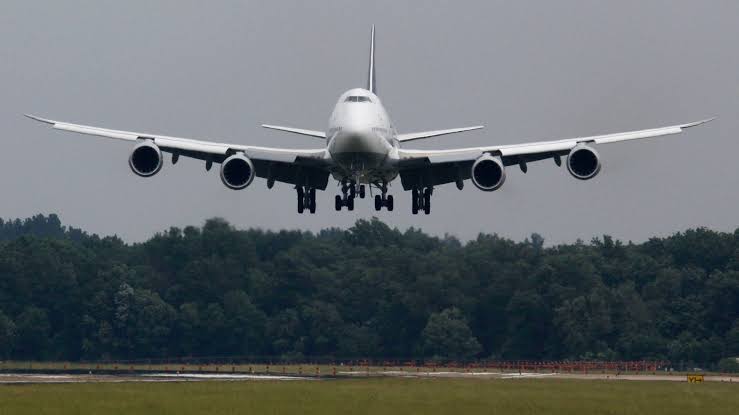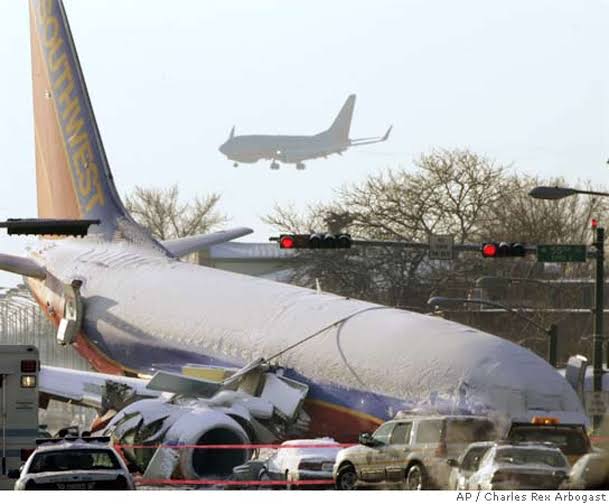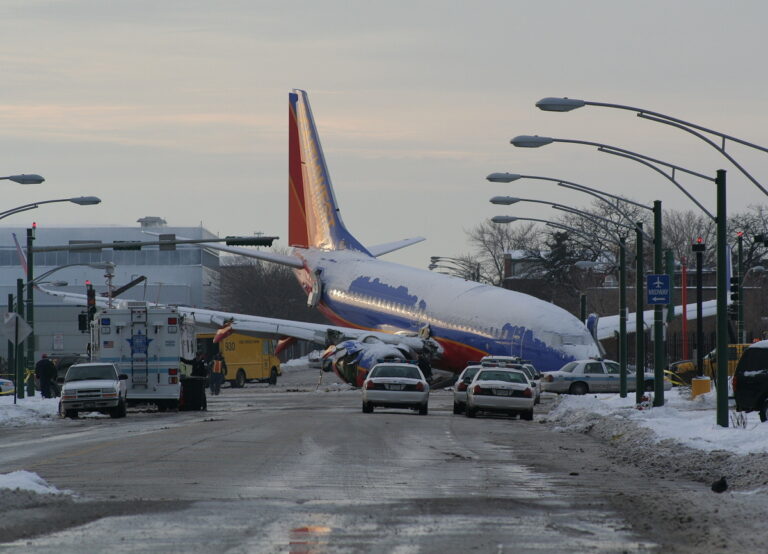11 Injured After Severe Turbulence Onboard Lufthansa Flight To Frankfurt
Eleven Injured After Severe Turbulence Onboard Lufthansa Flight to Frankfurt
On Tuesday, November 12, 2024, Lufthansa Flight LH511—operated by a Boeing 747-8 and carrying 329 passengers and 19 crew—encountered brief but violent turbulence while cruising over the Atlantic Ocean en route from Buenos Aires to Frankfurt. The unexpected jolt left eleven people—five passengers and six cabin crew—with mostly minor injuries. The aircraft diverted its path only to the extent necessary to stabilize conditions and landed safely at Frankfurt Airport at 10:53 am local time, where medical teams were standing by to treat those affected
Reuters
.
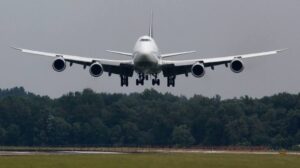
Incident Overview
Flight: LH511, Buenos Aires (EZE) → Frankfurt (FRA)
Date & Time of Turbulence: November 12, 2024; exact UTC time not disclosed
Aircraft Type: Boeing 747-8
Onboard: 329 passengers; 19 crew members
Injuries: 11 total (5 passengers, 6 crew); described as “mostly minor”
www.ndtv.com
Landing: Safe touchdown at Frankfurt Airport at 10:53 am (0953 GMT)
Sky News
According to a Lufthansa spokesperson, the flight’s safety was never in jeopardy. The turbulence was “brief” and occurred in an intertropical convergence zone, a region near the equator where north and south trade winds meet, often generating unstable air currents and convective activity
Sky News
.
What Is Severe Turbulence?
Turbulence is categorized by intensity—light, moderate, severe, and extreme—based on the abruptness of altitude and attitude changes and the difficulty it creates for crew and passenger movements.
Severe Turbulence: Characterized by large, abrupt changes in altitude and/or attitude. Unsecured objects are tossed about, and walking becomes impossible. Passengers not wearing seat belts may be thrown against the cabin interior.
Intertropical Convergence Zone (ITCZ): A circum-Equatorial belt known for rising warm, moist air and thunderstorms. Even on clear days, wind shear and sudden updrafts can induce strong turbulence.
In LH511’s case, the aircraft was likely transitioning through an area of rapidly changing vertical air currents, resulting in a sudden jolt. Passengers are always advised to keep seat belts fastened when seated—an instruction reinforced by Lufthansa following the incident
The Independent
.
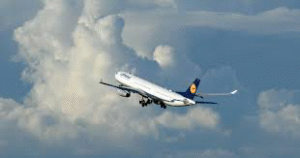
Sequence of Events
Climb and Cruise
After departure from Buenos Aires, LH511 climbed to its assigned cruise altitude—likely between FL350 and FL380 (35,000–38,000 ft).
Onset of Turbulence
Approximately 10 hours into the flight, while over the Atlantic, the aircraft entered the ITCZ.
Crew and passengers reported a sudden, violent bump—typical of severe turbulence.
Immediate Response
The flight crew donned oxygen masks briefly as standard procedure.
The seat-belt sign was illuminated; crew secured the cabin and ensured passengers were seated.
Medical kits were brought out; crew administered first aid to those with minor injuries.
Diversion Decision
Although no formal diversion was declared, the flight path was adjusted for smoother air and expedited descent once closer to European airspace.
Landing and Medical Care
On landing at Frankfurt Airport at 10:53 am, emergency medical services boarded and transported injured individuals to local hospitals for evaluation.
Lufthansa’s Special Assistance Team provided support, including hotel accommodation, onward travel arrangements, and psychological care where needed
Reuters
.
Passenger and Crew Impact
Medical reports indicate the injuries were predominantly bruises, sprains, and minor lacerations—consistent with passengers and crew being thrown against cabin furnishings. No fractures or life-threatening trauma have been reported. All eleven injured persons were discharged after observation; some received further care at Frankfurt-area clinics.
One passenger, who chose to remain anonymous, described the event:
“It felt like the plane dropped suddenly, then jolted upward. I hit my head on the seat in front. Crew rushed to help, and oxygen masks briefly came down. It was frightening, but they handled it professionally.”
Crew members later praised their training: cabin crew undergo regular drills for turbulence scenarios, including securing galleys, assisting injured passengers, and communicating calmly to minimize panic.
Airline Response and Safety Measures
Lufthansa has reiterated key safety protocols:
Seat-Belt Policy: Passengers must keep seat belts fastened whenever seated, regardless of the seat-belt sign status.
Crew Drills: Ongoing simulation exercises for severe turbulence and emergency medical response.
Special Assistance: Deployment of dedicated teams at destination airports to support affected passengers and families.
A Lufthansa spokesperson stated:
“We regret any distress caused. The safety and well-being of our passengers and crew are our top priorities. Our teams are in touch with those affected and arranging all necessary assistance.”
Reuters
Expert Analysis
Dr. Maria Hoffmann, an atmospheric scientist at the University of Munich, explains:
“Turbulence in the ITCZ can be highly unpredictable. Even with modern weather radar, small-scale updrafts and wind shear pockets may not be detected until penetration. Pilots rely on forecasts to avoid known convective clusters, but clear-air turbulence remains a challenge.”
Captain Erik Stoll, a veteran 747 pilot (retired), adds:
“The 747-8’s robust design handles severe turbulence well. The key is crew preparedness—securing the cabin and ensuring everyone is belted in. Rapid communication between cockpit and cabin crew is vital to minimize injuries.”
Historical Context and Comparable Incidents
While turbulence injuries are relatively rare compared to overall flight safety statistics, there have been notable severe cases:
Date Airline Route Injuries/Deaths Notes
May 20, 2024 Singapore Airlines SQ321 London → Singapore (via Bangkok diversion) 1 fatality; ~30 injured Extreme clear-air turbulence; one passenger died of suspected heart attack; multiple spine/head injuries
The Independent
July 2024 Air Europa Madrid → Montevideo 40 injured Emergency landing in Brazil after sudden turbulence
November 2017 United Airlines UA1175 San Francisco → Honolulu 11 injured Severe turbulence over Pacific; aircraft diverted to LAX
These incidents underscore that while modern aircraft are structurally capable of withstanding turbulence, human injuries occur when seat-belt protocols are not strictly observed.
The Science of Avoiding Turbulence
Airlines employ multiple strategies:
Weather Radar & Satellite Data: Detect convective cells and heavy precipitation.
Pilot Reports (PIREPs): Real-time updates from other aircraft in the vicinity.
Meteorological Forecasts: Predict areas of potential clear-air turbulence (CAT).
Flight Planning: Routing around known storm systems and jet-stream cores.
Nevertheless, CAT—turbulence without visible clouds—remains difficult to predict. Advances in LIDAR and space-based sensors promise better detection in coming years.
Passenger Preparedness: Best Practices
Always Fasten Seat Belt: Keep it low and tight whenever seated.
Secure Belongings: Store loose items in overhead bins or under seats.
Follow Crew Instructions: Immediate compliance can prevent injuries.
Use Brace Position: In case of sudden turbulence, lean forward, protect head.
Conclusion
The LH511 turbulence incident serves as a reminder that even in routine long-haul operations, nature’s forces can intervene without warning. Lufthansa’s swift handling—professional crew response, timely medical care, and transparent communication—ensured that no life was lost and injuries remained minor. As aviation technology and meteorological science advance, the industry continues striving to mitigate turbulence risks, but passenger vigilance—especially regarding seat-belt use—remains a critical line of defense.
